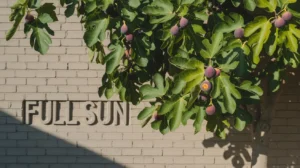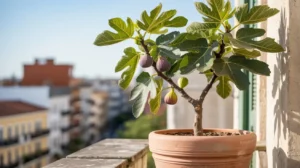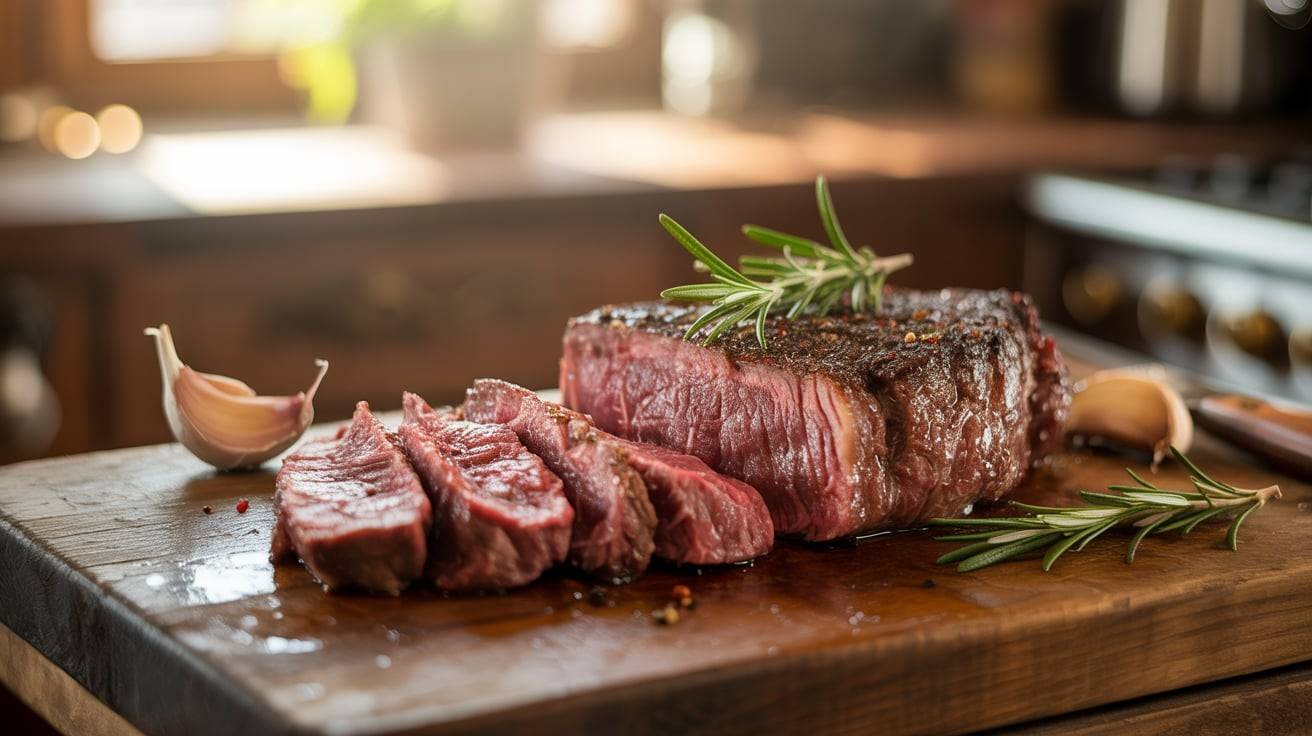Let’s be real—most people grow plants for two reasons: they want fresh food, and they want something that actually survives without constant begging. Enter the fig tree (Ficus carica): the tough, sweet-fruit-making champion that doesn’t just grow—it thrives, even when your gardening skills are somewhere between “I try” and “I forget to water things.”
But here’s what no one tells you: fig trees don’t just give you fruit. They give you control. Control over what goes into your food. Control over your space. Control over your time. And they do it all without turning your garden into a full-time job.
You don’t need expensive soil. You don’t need a degree in horticulture. You just need to know what this tree likes, and what it hates. That’s what this guide is here for.
We’re not going to waste time on boring facts you could Google. We’re giving you the real deal—how to care for a fig tree in a way that fits your life, your schedule, and your climate. By the time you’re done reading, you won’t just know about fig trees—you’ll be ready to grow one that actually produces fruit you’ll want to show off.
So if you’ve ever dreamed of growing something meaningful, sweet, and low-maintenance? You’re in the right place. Let’s get your hands a little dirty—and your garden a whole lot sweeter.
Table of Contents
ToggleSite Selection: Where Your Fig Tree Feels at Home
The common fig tree is one of the few fruit trees that doesn’t ask for much—but where you plant it still matters a lot. If you choose the wrong spot, your tree might survive but never really grow well. If you give it the right place, it will reward you with fresh, sweet fruit for years.
This section will help you find the best place to plant a fig tree—one where it can stay healthy, strong, and productive with very little care.
Full Sun Is a Must
A fig tree needs full sun to grow well. That means at least six to eight hours of direct sunlight every single day. The more sunlight it gets, the more energy it has to grow fruit.
Try to avoid shady areas, especially those that stay cool or damp. If you live in a cooler region, planting your tree near a south-facing wall is a smart move. The wall keeps the area warmer and protects your tree from cold wind.
The Soil Must Drain Well
Soil for fig trees should be loose, light, and well-drained. This means water should pass through it easily and not sit around the roots. Wet soil can cause the roots to rot, which can kill the tree over time.
Avoid areas where water collects after rain. If the ground stays wet for long, that’s not the right spot. You can improve your soil by adding organic compost or even sand to help water move through it faster.
If you’re planting in a pot, make sure it has drainage holes at the bottom. Don’t let the pot sit in a tray full of water—this causes the same root problems as wet soil.
Give It Room to Breathe
Fig trees need space for their roots and leaves to spread. Don’t plant them too close to walls or fences. This blocks airflow and can lead to diseases. Good air around the tree helps keep its leaves dry and healthy.
Leave at least 2 to 3 feet of space around the tree on all sides. This also makes it easier for you to water, prune, and check on the tree later.
What About Urban or Small Spaces?
If you live in the city or don’t have much space, you can still grow a fig tree in a large container. Place the pot in a sunny spot like a balcony, rooftop, or patio. These small spaces often create a microclimate—a warmer area that’s perfect for growing figs.
Make sure the container is big enough for the roots to grow and not dry out too quickly. Use quality potting soil that drains well, and always check that water isn’t building up at the bottom.

Soil, Drainage & Root Management: What’s Happening Underground?
Your fig tree doesn’t care how pretty your garden looks on the surface. What really matters is what’s going on underneath. That’s where the roots live. And if the roots aren’t happy, the tree won’t grow well, and it won’t make fruit.
This section will help you make the best soil, avoid problems like rot, and learn how to care for roots the right way—whether your tree is in the ground or in a container.
Start with the Right Soil
A healthy fig tree starts with good soil. The best kind is called loamy soil. This soil is soft, a little crumbly, and drains water well. It holds just enough water for the roots to drink but lets the extra water flow away so the roots don’t drown.
To make your soil better, you can mix in compost or a little sand. This gives the soil air pockets, so the roots can breathe and grow.
Water Should Flow, Not Stay
Fig tree roots hate wet feet. That means water should never sit around the roots for too long. If it does, the roots will rot. Once rot starts, the roots stop working, and the tree starts dying.
To stop that from happening, plant your fig tree in a place where water drains away quickly. After it rains, the soil should dry out in a few hours—not days.
If you’re planting in a pot, the pot must have drainage holes at the bottom. If those holes are blocked or missing, water will get stuck, and the roots will suffer.
What’s a Root Ball?
When you buy a young fig tree, it comes with a bunch of roots and soil wrapped together. This is called the root ball. Before you plant the tree, you need to look at it.
If the roots are wrapped tightly around the ball or going in circles, the tree is root-bound. That means the roots are stuck in a small shape and can’t stretch out into the soil.
To fix this, gently pull some of the outer roots loose with your fingers. If they’re really tight, you can make small cuts to help them open up. This gives your tree a better start and helps the roots spread out fast.
Fig Tree in a Container? Pay Attention
Many people grow their fig tree in a container. That works great—but only if you take care of the soil and the pot.
Use well-draining soil, and make sure your pot has enough room for the roots to grow. If you see roots coming out of the drainage holes, the tree needs a bigger pot.
Also, don’t let water sit in the saucer under the pot. Always empty it so the roots don’t stay wet.

Watering & Feeding Schedule: Hydration Without Suffocation
Fig trees don’t like soggy roots—but they don’t like being dry for too long either. The trick is to give them just enough water to stay moist, without drowning them.
So, how to water a fig tree the right way? It depends on where and how you’re growing it.
If your tree is in the ground, water it deeply once a week during hot weather. That means soaking the soil around the roots, not just a quick splash. If it’s in a pot, you’ll need to water more often, maybe every 2 to 3 days, because pots dry out faster.
Signs of overwatering: yellow leaves, soggy soil, or mold around the base. Signs of underwatering: dry, droopy leaves and cracks in the soil.
Feeding your fig tree is just as important. Use a slow-release fertilizer in spring and again in summer. Or go natural with organic compost. Don’t overfeed—figs grow best with a light, steady diet.
Use a balanced fig tree fertilizer that has equal parts nitrogen, phosphorus, and potassium (like a 10-10-10 mix).
The right water and food routine helps your fig tree grow strong roots, healthy leaves, and sweet fruit—without stress.
Seasonal Pruning: Sculpting for Health & Harvest
If you want a fig tree that grows faster, stays healthier, and gives you more fruit, then pruning isn’t optional—it’s necessary. Think of it like cleaning up a messy room. The better it’s organized, the better it works.
Let’s start with when to prune fig tree. The best time is late winter, when the tree is still sleeping and not growing. This is when you can shape it without hurting it. Cut off long, thin branches, and shorten the tall ones to control the size.
In summer, do a light trim. Take off any small, weak branches that crowd the middle. This lets in sunlight and helps air flow, which keeps the leaves dry and reduces disease.
Look at the bottom of the tree for suckers. These small shoots steal energy from the main tree. Cut them off right away. Also check for deadwood—branches that look dry, cracked, or gray. These won’t grow fruit and should be removed.
Pruning fig trees once or twice a year keeps your tree strong, clean, and fruit-ready. It’s one of the easiest ways to boost growth and protect your tree long-term.
Fig tree maintenance isn’t hard—but skipping it could mean fewer figs for you.
Pests, Disease & Stress Signs: Early Detection = Healthy Trees
Even a strong fig tree can face trouble if you’re not paying attention. Tiny pests, hidden diseases, and stress signals can slowly harm your tree without making much noise. But if you spot the signs early, you can fix the problem before it gets big.
One of the most common pests is the aphid. These tiny green insects hide under fig leaves and suck the sap out, making the leaves curl and turn weak. If you see ants crawling on your tree, it’s likely they’re chasing the sticky liquid aphids leave behind.
Another sneaky problem is the nematode—a tiny worm in the soil that attacks the roots. If your tree looks sad even with enough water and sunlight, gently check the roots. Swollen or knotted roots are a big clue.
If the leaves turn yellow, your fig tree might be under stress. This could be due to too much water, poor drainage, or a fungus like fig rust, which shows up as yellow or orange spots. Always remove bad leaves and water only the soil.
Check your tree every week. A little care today means a happy, healthy fig tree tomorrow—with lots of sweet fruit!
Harvesting Tips: From Ripeness to Picking Like a Pro
Wondering when to harvest figs? It’s not just about color—figs don’t always turn purple or brown when they’re ripe. Instead, look for a fig that feels soft, hangs down from the branch, and comes off with a light twist. If you have to pull hard, it’s not ready yet.
Use the “touch test”—gently press the fig. If it feels squishy like a marshmallow, that’s a good sign it’s time to pick. A ripe fig also gives off a sweet smell. These are signs your fig is full of juice and flavor.
Knowing how to pick figs without damaging them is super important. Always pick figs in the early morning when they’re cool. Use your fingers to softly twist and lift. Don’t yank or you might rip the skin or harm the branch.
After picking, place them gently in a flat basket or tray. Figs bruise easily, so don’t stack them. Keep them in a cool spot and eat them within 2–3 days. For longer fig fruit care, you can dry or freeze them.
Picking figs the right way means you get the sweetest taste, avoid waste, and keep your tree healthy. With just a little care, you’ll feel like a fig-picking expert in no time—and enjoy delicious fruit straight from your own garden!
Winter Care: Don’t Let the Cold Kill Your Crop
Most fig trees don’t die from bugs—they die because of cold weather. Winter can hurt or even kill your tree if you don’t take care of it. That’s why fig tree winter protection is super important.
If your tree is planted outside and you live in a cold place, start protecting it before the first frost. Wrap the tree with burlap, blankets, or bubble wrap. Then, put mulch, dry leaves, or straw around the bottom of the tree. This helps keep the roots warm during freezing nights.
For potted trees, overwintering fig tree is easy. Just move the pot inside—like into a garage, basement, or shed. Keep the tree in a cool place where it won’t freeze, but also won’t get too warm.You can also try insulation tricks like placing foam boards or straw bales around the trunk. This gives extra warmth without hurting the tree.Wondering how to protect fig tree in winter the right way? It’s simple: wrap it, cover the roots, and keep it dry. Wet and frozen roots can kill your tree.Take action before the cold hits. A little care now means your fig tree will survive the winter and grow strong, healthy fruit again in the spring.
Container-Grown Fig Trees: The Balcony Gardener’s Secret Weapon
Don’t have a garden? No worries! You can still grow a healthy fig tree on your balcony or patio by growing fig trees in pots.
The first step is picking the best container for fig tree. Choose a pot that is at least 18 inches wide and deep with holes at the bottom to let water drain out. This stops the roots from getting too wet and helps the tree grow strong.
Fill the pot with light, well-draining soil and place it where the tree can get 6 to 8 hours of sunlight every day. A sunny balcony or porch is perfect for your fig tree.
When your fig tree grows bigger, it will need a new, bigger pot. To repot without hurting the roots, gently loosen the soil around the roots and place the tree into the new pot. Water it well after repotting.
To keep your tree healthy and full of fruit, water it regularly but don’t let the soil stay soggy. Use a balanced liquid fertilizer every few weeks during spring and summer.The best part about container figs is you can move them indoors during cold months, protecting your tree from frost. With these simple steps, your fig tree in a container will stay happy and productive, even in small spaces!

Frequently Asked Questions About Fig Tree Care
What is the best sunlight condition for growing a healthy fig tree?
Fig trees thrive best when planted in full sun, meaning they need at least six to eight hours of direct sunlight daily. Full sun provides the energy necessary for the tree to produce sweet, juicy fruit and maintain healthy growth. If you live in a cooler climate, placing your fig tree near a south-facing wall can help keep it warm and protected from cold winds. Avoid shady or damp spots as they can stunt growth and lead to diseases. Sunlight is key to a productive and strong fig tree.
How often should I water my fig tree to avoid root problems?
Proper watering is crucial for fig trees because their roots dislike being too wet or too dry. The ideal watering schedule depends on whether your fig is planted in the ground or in a container. For trees in the ground, watering deeply once a week during hot weather is usually enough to keep the soil moist but not soggy. Container-grown figs may need watering every 2 to 3 days, as pots dry out faster. Always check the soil’s top inch—water only when it feels dry to avoid root rot caused by overwatering.
Can fig trees grow well in small spaces or containers?
Yes! Fig trees are surprisingly adaptable and can thrive in containers, making them perfect for urban gardeners or those with limited space. Use a large pot (at least 18 inches wide and deep) with proper drainage holes to prevent waterlogging. Place the container in a sunny spot that gets 6 to 8 hours of sunlight daily. Container figs need regular watering and occasional feeding with a balanced fertilizer. During winter, you can move the pot indoors to protect it from frost, ensuring year-round health and fruit production.
How do I know when my figs are ripe and ready to harvest?
Unlike many fruits, figs don’t change color dramatically when ripe. To tell if your fig is ready to pick, use the “touch test”: gently press the fig and check if it feels soft or squishy, like a marshmallow. Ripe figs will hang down from the branch and detach easily with a gentle twist. They also give off a sweet, fruity aroma. Harvest figs in the early morning to keep them fresh, and handle them carefully as they bruise easily. Proper harvesting ensures you enjoy the sweetest, juiciest figs possible.
What are the common pests and diseases that affect fig trees, and how can I prevent them?
Fig trees are generally hardy but can fall victim to pests like aphids—small green insects that suck sap and cause leaf curling—and nematodes, tiny worms that damage roots. Signs of infestation include curled leaves, sticky residue, or swollen roots. Fig trees can also develop fungal diseases like fig rust, which appears as yellow or orange spots on leaves. Prevent problems by regularly inspecting your tree, removing affected leaves, and avoiding overwatering. Using natural pest control methods or insecticidal soap helps keep your fig tree healthy and fruiting.
Final Tips & Common Mistakes to Avoid
Growing a fig tree is fun and rewarding, but some simple mistakes can slow down your success. Here are the best fig tree growing tips to help your tree thrive and give you delicious fruit.
One big mistake is overwatering. Fig trees like soil that is moist but not soaking wet. Too much water can cause the roots to rot and hurt the tree. So, water your fig tree only when the top inch of soil feels dry.
Another common problem is not checking for pests. Bugs like aphids or tiny worms can harm your tree if you don’t spot them early. Look at the leaves and stems every week to catch problems before they get worse. Too much fertilizer can also be a problem. Feeding your fig tree more than needed can burn the roots and stop growth. Use fertilizer as directed, usually once a month during the growing season.
Here’s a bonus tip: don’t baby your fig tree too much! These trees are strong and actually grow better with a little bit of stress like dry soil or cooler weather.By following these simple tips and avoiding common fig tree care mistakes, you’ll keep your tree healthy, strong, and full of sweet figs year after year. Start today, and watch your fig tree flourish!



